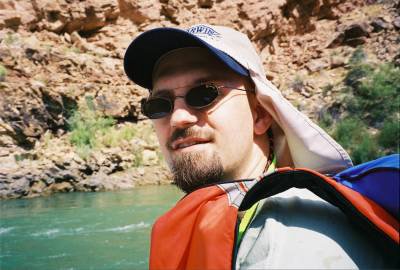R.A.T.E. and Nuclear Decay Theory
The R.A.T.E. team's research project to “conduct a literature search for evidence and models of accelerated nuclear decay and adapt to a creationist worldview if appropriate” fell to Eugene F. Chaffin. He describes his approach:
"In this chapter we will advance the hypothesis that the coupling constants for the strong and possibly the weak force are actually not constants but variables. We shall point out many instances in the scientific literature where physicists have considered this as a real possibility." (Vardiman et al., 2005:526)
And, Dr. Chaffin does precisely that. There are, in fact many working scientists who have openly considered the possibility of whether or not the coupling constants of atomic nuclei were always as they are now. However, the context in which these speculations have been made have been regarding the conditions shortly after the “Big Bang,” or in singularities such as black holes. Chaffin finds lots of fun references in the scientific literature, though, citing everyone from Edward Witten in relation to string theory (or “M” theory, as it’s now called), to Stephen Hawking. He discussed everything from Kaluza-Klein theory to Calabi-Yau shapes. He left very few stones unturned in terms of modern quantum mechanics.
So how did he do? Did he point out any instances in which accelerated decay had been observed? No. Did he suggest any mechanism by which the Fermi coupling constants might shift? No. If the strong or weak forces had shifted, did he suggest when? No. Did he suggest any means by which accelerated decay might be detectable? Ah! Here he was just a little bit successful!
Chaffin suggests that one means of detecting accelerated decay involves double β-decay. This rare type of decay occurs when two electrons are emitted in the same decay, (not just two β-decays in succession). The only useful isotope for which the half-life for double β-decay has been directly measured is 82Se. So, Chaffin suggests, it is possible to use this to see if accelerated decay is indicated. If the Fermi constant (GF) is changing, then the half-life for double β-decay should change relative to that for ordinary β-decay. Hence, he suggests, what is needed is a suite of samples for which 82Se and its decay product 82Kr have been measured, and also some other measurements such as K/Ar or Rb/Sr.
To be completely honest, the logic behind this is somewhat lost on me. I don’t know enough about quantum mechanics to be able to say that the Fermi constant would be seen as shifting if the half life of double β-decay changes or not. However, it is a pure research proposal which goes to learning more about the precise nature of the atom. With continued experiments along these lines going on every day, particularly at the recently repaired Large Hadron Collider (LHC) in Europe, such an experiment may accidentally yield a glimmer of insight into such physics. As such, I’m in favor of Dr. Chaffin’s proposal. A good suggestion is a good suggestion, regardless of whether the person doing the suggesting might possibly be a complete crackpot with an axe to grind.
Would this sort of experiment find any confirmation for the creationist viewpoint? I strongly suspect not. In fact, if it is shown that the Fermi equation is “shiftable,” then it would have to have shifted after the onset of the existence of planet Earth, and I highly doubt that is the case. I agree with the other scientists quoted, that the “shift” would have occurred close to the point of the “Big Bang,” or perhaps within black holes.
All in all, Chaffin’s research project achieved very little in terms of advancing his agenda. But it made for some damned interesting reading!


0 Comments:
Post a Comment
<< Home